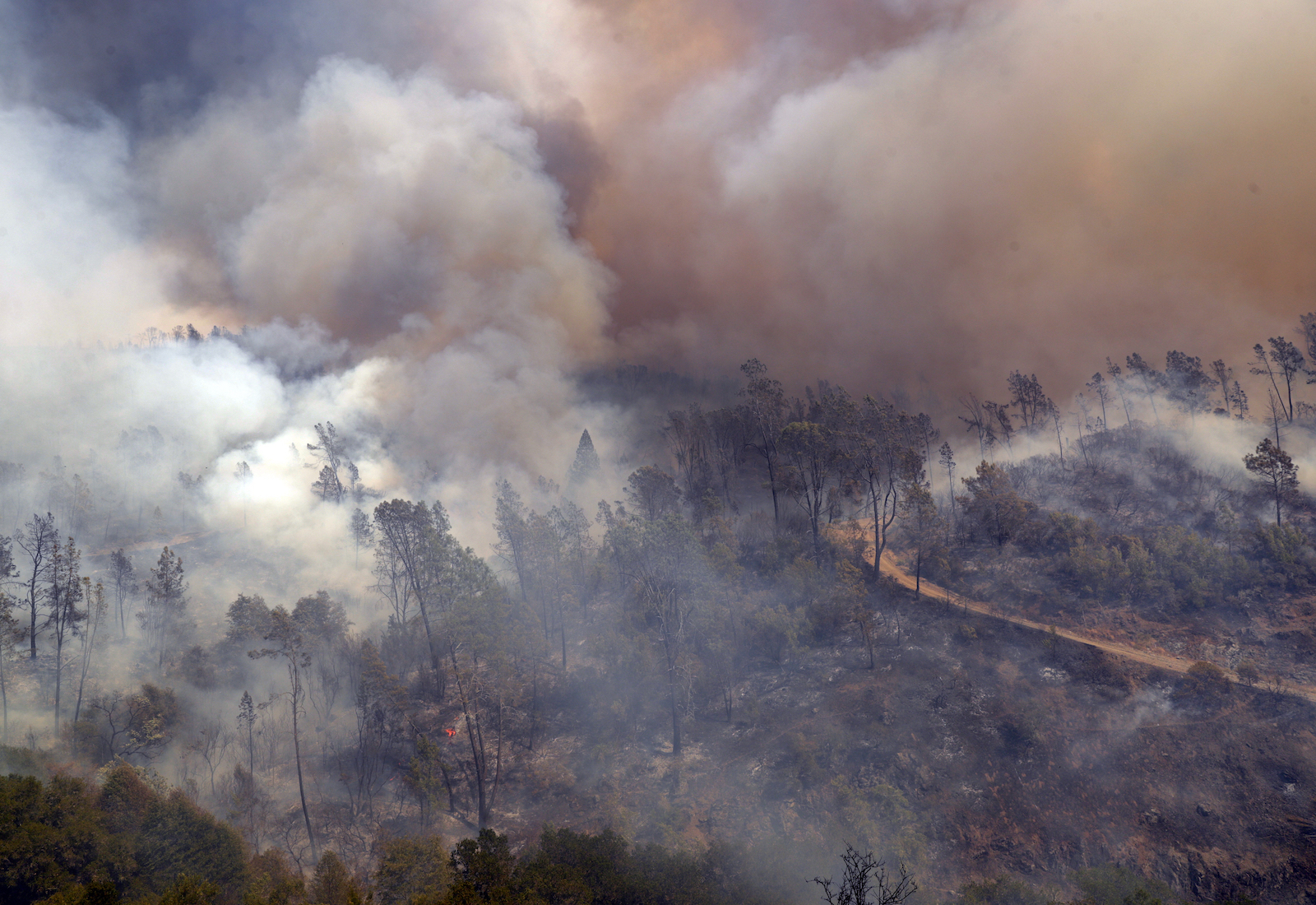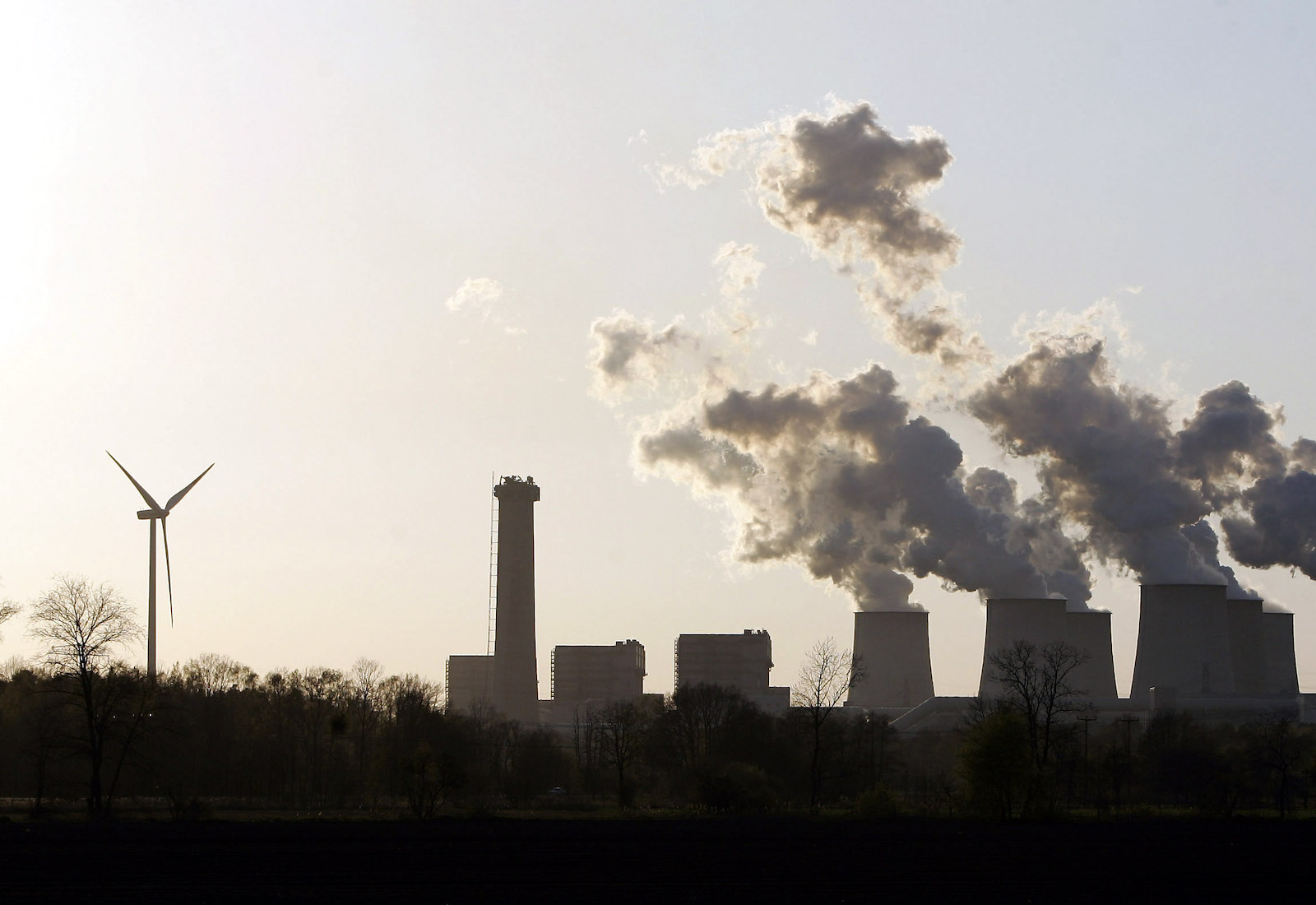In the premier episode of Apple TV’s climate show, Extrapolations, it’s 2037 and Earth is in turmoil. Global temperatures have reached record highs. Wildfires rage on every continent. People lack clean drinking water, while a stone-faced billionaire hoards patents to life-saving desalination technology.
People are understandably upset. Because it’s nearly a decade and a half in the future, protests now include towering holograms and desperate calls to limit global warming — which has long since blown past 1.5 degrees Celsius (2.7 degrees Fahrenheit) — to 2 degrees C. One thing is eerily familiar, though: In one scene, demonstrators chant “net-zero now!” — a catchphrase with origins at the end of the last decade.
To some, this is a surprising slogan to hear today, let alone in 2037. Although the concept of global net-zero is rooted in climate science, today’s carbon neutrality pledges from individual governments and corporations have been criticized in some quarters as a “con,” because they allow polluters to continue emitting greenhouse gases. The carbon offset projects that are supposed to neutralize all those residual emissions are often questionable, if not a sham.
“If today’s version of net-zero is still the rallying cry for climate action 15 years from now, we are in big, big trouble,” said Rachel Rose Jackson, director of climate research and policy for the nonprofit Corporate Accountability. “I hope we’re headed down a different path.”
Just what that path looks like, however, remains a matter of debate.
The concept of net-zero is rooted in the climate science of the early 2000s. Between 2005 and 2009, a series of research articles showed that global temperatures would continue rising alongside net emissions of carbon dioxide. The “net” acknowledged the role of long-term processes like deep-ocean carbon uptake, in which the seas absorb the pollutant from the air. These processes occur over decades, even centuries.
The term “net-zero” doesn’t appear in the Paris Agreement of 2015, but it was at about that time that it went mainstream. Based on recommendations from the United Nations’ Intergovernmental Panel on Climate Change, or IPCC, countries agreed in Article 4 of the accord to achieve a “balance” between sources and sinks of greenhouse gas emissions during the second half of the century.
So far, so good; this is relatively noncontroversial. “Global net-zero is nonnegotiable if you’re serious about climate targets,” said Sam Fankhauser, a professor of climate change economics and policy at the University of Oxford. Where things start to skew, however, is when individual countries and businesses adopt net-zero targets for themselves. “That’s where you leave the science and get into the realm of policy and opinion,” Fankhauser said.
Sweden became the first country to legislate a midcentury net-zero goal in 2017. Since then, that target has exploded in popularity, almost to the exclusion of other pledges. Some 92 percent of the global economy is now covered by a patchwork of such commitments, made by entities including 130 countries and 850 of the planet’s largest publicly-traded companies.
Philip Reynaers / Photonews via Getty Images
Fankhauser considers that good news. “None of those firms or organizations had any targets at all before, so they’re moving in the right direction,” he said, although he added that there’s lots of room for improvement in the integrity of those promises. A global analysis published last year found that 65 percent of the largest corporate net-zero targets don’t meet minimum reporting standards, and only 40 percent of municipal targets are reflected in legislation or policy documents.
Others, however, have harsher words for something they consider little more than “rank deception” from big polluters. With heads of state and fossil fuel companies pledging net-zero yet planning to expand oil and gas reserves, Jackson said the logic behind carbon neutrality has been “completely lit on fire” by greenwashing governments and corporations. “They have entirely co-opted the net-zero agenda,” she said.
At the heart of the issue lies that little word, “net,” and the offsets it implies. When companies or governments can’t get their climate pollution to zero, they can pay for offset projects to either remove carbon from the atmosphere or prevent hypothetical emissions — like by protecting a stand of trees that otherwise would have been razed. Under ideal conditions, a third party evaluates these offsets and converts them into “credits” polluters can use to claim that some of their emissions have been neutralized.
The problem, however, is these offsets are too often bogus — the market for them is “honestly kind of a Wild West,” said Amanda Levin, interim director of policy analysis for the nonprofit Natural Resources Defense Council. For projects claiming to avoid emissions, it’s difficult to prove the counterfactual: Would a given forest really have been cut down without the offset project? And carbon removal schemes like those based on afforestation — planting trees that will store carbon as they grow — might last only a few years if a disease or forest fire comes along.
Levin said polluters too often use poorly regulated and opaque “junk offsets” to delay the absolute emissions reductions required to combat climate change. Although the IPCC includes offsets in nearly all of its pathways to keep global warming well below 2 degrees C (3.6 degrees F), experts agree those offsets should be considered a last resort used only when it’s no longer possible to further cut climate pollution.
“Net-zero does not mean that we don’t have to take steps to directly reduce our emissions,” Levin said.
Many, many others — from environmental groups to scientists to policymakers — agree. Where opinions differ, however, is what to do about it. Many net-zero critiques are paired with suggestions for reform, like a 2022 report from a U.N. panel that blasted nongovernmental net-zero pledges as “greenwash.” It recommended tighter guidelines on reporting and transparency, as well as new measures to ensure the integrity of offsets.

Carlos Avila Gonzalez / The San Francisco Chronicle via Getty Images
Carbon Market Watch, a European watchdog and think tank, takes a slightly different approach. In a February letter to members of the European Parliament, the organization called for a total ban on “carbon neutrality” claims for companies’ products, arguing that such boasts give consumers the false idea that business as usual can continue without adverse impacts on the climate or environment.
“To say that you neutralize your climate impact by investing in an avoided deforestation program halfway across the world? That’s not scientifically sound,” said Lindsay Otis, a policy expert for Carbon Market Watch. “It deters from real mitigation efforts that will keep us in line with our Paris Agreement goals.”
To Nilles, it’s not necessarily offset projects that should be banned. Although she acknowledged that many are problematic, she said mitigation efforts like reforestation can have “a potential real-world benefit,” and it would be a mistake to stop funding them. Instead, she considers this a communication problem: Rather than allowing companies to claim carbon mitigation projects cancel out residual emissions, Carbon Market Watch favors a “contribution claim” model, in which polluters advertise only their financial support for such projects. Some carbon credit sellers like Myclimate are embracing a version of that model, as is the global payment service Klarna.
Carbon Market Watch distinguishes between “carbon neutrality” claims, which describe companies’ products and current environmental performance, and “net-zero” claims about what companies say they’ll do in the future, as in “net-zero by 2050.” It says the latter are still permissible, but only if backed by a detailed plan to quickly drive down emissions and not offset them.
On its face, this is similar to an alternative benchmark that has gained popularity in recent years: “real zero,” which involves the rapid elimination of all fossil fuel production and greenhouse gas emissions without the use of offsets. At least two major companies, the utilities NextEra and National Grid, have eschewed their own net-zero goals in favor of real zero. However, some environmental groups — including a coalition of 700 organizations from around the world — take the concept further. They see real zero as a whole new lens with which to view equitable climate action, one that rejects a single-minded, technocratic focus on greenhouse gas emissions.
“The real zero framing puts at the center not just the urgency” of climate mitigation, “but also fairness,” said Jackson,the policy director at Corporate Accountability. She and others say real zero is an opportunity to reorient the international climate agenda around new priorities, like funneling climate finance to the developing world and protecting Indigenous land rights. It also sets faster decarbonization timelines for the biggest historical polluters and demands that they pay reparations to communities most harmed by the extraction and burning of fossil fuels.
It’s a far-reaching and ambitious agenda, and its calls for climate justice are broadly supported by experts and policy wonks. Still, some push back, returning to the idea of net-zero as a global necessity.

Sean Gallup / Getty Images
“While real zero is a valuable guiding light, net-zero is still a worthy and necessary goal,” said Jackie Ennis, a policy analyst for the Natural Resources Defense Council. Her modeling shows that even the most ambitious carbon mitigation scenarios will require offsets for the hardest-to-abate corners of the economy, which she defined to include waste management and animal agriculture. She pointed to work from the independent Integrity Council for the Voluntary Carbon Market to define criteria that define a “high-quality” offset — including whether it contributes to sustainable development goals and doesn’t violate the rights of Indigenous peoples.
According to Fankhauser, the “gold standard” here is geological removal, in which carbon is drawn out of the atmosphere and locked up in rock formations. This technology can’t yet handle even a tiny fraction of the planet’s overall carbon emissions, but experts say it could one day enable offsets that are less prone to double-counting and more likely to sequester carbon for the long haul.
Fankhauser suggested a sort of middle ground between real and net-zero, in which governments set different decarbonization targets for different sectors: net-zero for those like shipping and steel-making for which zero-carbon alternatives aren’t yet viable, and the total elimination of emissions for the rest of the economy. Some jurisdictions already do something like this. The economy-wide net-zero target set by New York’s Climate Leadership and Community Protection Act prohibits offsets for the power sector and caps them at 15 percent for the state’s overall emissions by 2050. That means 85 percent of Empire State emissions reductions must come from actually reducing emissions.
“That’s a perfect example of how policymakers are trying to constrain the use of offsets so they’re being used where it’s most valuable,” said Levin, with the Natural Resources Defense Council.
More global efforts, however, are hard to come by, likely because there’s so much contention around the net-zero agenda. One thing people seem to agree on, however, is that the status quo is not working. Although thousands of companies and governments have pledged to reach net-zero sometime in the next several decades, the planet is still on track for dangerous levels of global warming — 2.8 degrees C (5 degrees F), to be precise. That’s more than enough to “cook the fool out of you,” as one protester in Extrapolations so eloquently put it.
“The current trajectory is one of failure,” Jackson told Grist, though she said it’s not too late to turn things around. “The money exists, the technology exists, the capacity exists — it’s only the lack of political will. If we’re brave enough to alter course and redirect toward what we know is needed, then a totally different world is possible.”

